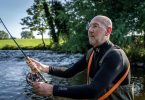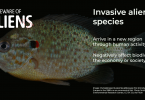The Irish Sea Conservation Zones project welcomes the new Marine and Coastal Access Act and calls on users of the Irish Sea to recommend marine conservation zones.
Up to now, Marine Protected Areas have covered only 9.43% of English waters, but the new legislation will enable far more of the sea to be protected, in part through new Marine Conservation Zones.
Rowan Byrne, Irish Sea Conservation Zones (ISCZ) project manager, said: “We’re at a pivotal point in our relationship with the sea. Marine protection has never before been attempted on this scale. Marine conservation zones are the first step in creating a new legacy for the Irish Sea, helping maintain its biodiversity and habitats for future generations.
“I want to bring passionate people right into the heart of the process from the beginning. This is their chance – they have to be in it to steer it.”
Rowan and staff from ISCZ will be at events in England, Scotland, Ireland and Northern Island throughout November and December.
People can get involved with the Irish Sea Conservation Zones project by emailing m.sutcliffe@irishseaconservation.org.uk, calling 01925 813 200 or visiting www.irishseaconservation.org.uk
The Irish Sea has lots of different habitats including honeycomb reefs made up of living worms and muddy beds home to sea urchins, Dublin Bay prawns and brittlestars. Other landscapes include rocky reefs, sea grass beds, and gardens made up of plant-like animals called sea pens.
It is also home to important species such as over 30 species of sharks, plus leatherback turtles, whales, dolphins and porpoise, as well as the rare and endangered pink sea fan.
The Irish Sea is of great financial importance as it hosts the Port of Liverpool – a major container port – as well as oil and gas drilling platforms. The waters also support important fish and shellfish fisheries that were worth £42.5 million in 2008.
The climate and shallow water also make the Northwest coast of the Irish Sea an excellent location for the development of wind farms, producing valuable renewable energy.







